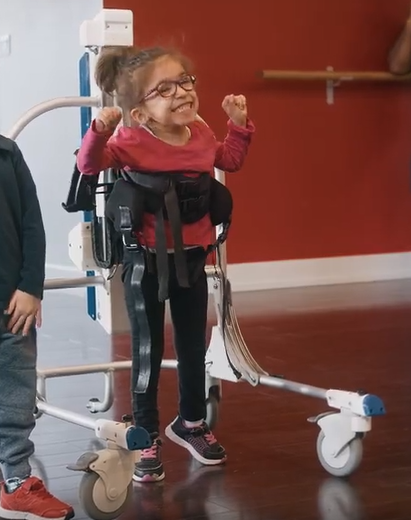Everybody can dance: The Benefits of Dance for Children with Disabilities
- Audrey Parent
- May 15
- 3 min read
Dancing is a dynamic and expressive activity enjoyed by people of all ages, and its benefits go far beyond physical fitness. For children with disabilities, dance can positively influence many aspects of their development.
What is Dance?
Dance is much more than just moving to music—it’s an activity that combines various physical, cognitive and emotional engagement. The act of dancing implies at least one person moving to a rhythm, typically cued by music (Dhami et al. 2015). It includes spontaneous movements or rehearsed sequences of movements, performed either individually or as part of a group. Beyond movement, dancing also trains skills such as perception, memory and emotion. When done in groups, it fosters social interactions.
Therefore, dance is an activity that engages both the body and the mind, combined with social interactions.
The Benefits of Dance for Children with Disabilities

In addition to being fun, dancing offers numerous benefits for children with disabilities. It can contribute to their physical, cognitive and emotional well-being, while creating opportunities for social integration.
1. Physical Benefits
Dance can significantly contribute to improving physical health. Research highlights how dancing can help improve motor skills, balance, posture, coordination. and overall physical fitness in children with disabilities (May et al. 2021).
2. Cognitive Development
Dancing is not just about physical movements—it's also an activity that engages the brain. Learning and rehearsing dance routines challenge attention, concentration, memory, and executive functioning. Moreover, dancing promotes body awareness, the ability to mirror movements and to express creativity (Lopez-Ortiz et al. 2019).
3. Psychological and Social Benefits
Engaging in dance offers children with disabilities a unique way to express themselves. Dance fosters emotional expression and well-being (Lopez-Ortiz et al. 2019). Although research on the psychosocial benefits of dance is still developing, early studies suggest that children with disabilities can benefit emotionally from being part of a group activity that fosters integration and interactions with others. This can help creating a sense of belonging and generate joy when participating alongside peers (Zitomer MR, 2016)
Dancing with the Levity?
Dance is a powerful activity that can enhance the lives of children with disabilities. It offers physical, cognitive, psychosocial benefits, from improving motor skills to fostering emotional expression and building social connections.
The Levity can provide an opportunity for children with disabilities to experience the joy of movement through dance. With its hands-free design, children can freely engage in arm movements, while its support system can help them maintain an upright position and stability, whenever possible. Dancing is a wonderful activity that can be adapted to suit everyone’s unique abilities. Discover the freedom of movement and express yourself fully with the Levity!
Please refer to your doctor, physical therapist or occupational therapist for more information specific to your child’s need, and do not hesitate to contact Ora Medical for more information regarding the Levity.
REFERENCES
Dhami P, Moreno S, DeSouza JF. New framework for rehabilitation–fusion of cognitive and physical rehabilitation: the hope for dancing. Frontiers in psychology. 2015;5:1478.
López-Ortiz C, Gaebler-Spira DJ, Mckeeman SN, Mcnish RN, Green D. Dance and rehabilitation in cerebral palsy: a systematic search and review. Developmental Medicine & Child Neurology. 2019;61(4):393-398. doi:10.1111/dmcn.14064
May T, Chan ,Emily S., Lindor ,Ebony, et al. Physical, cognitive, psychological and social effects of dance in children with disabilities: systematic review and meta-analysis. Disability and Rehabilitation. 2021;43(1):13-26. doi:10.1080/09638288.2019.1615139
Zitomer MR. ‘Dance Makes Me Happy’: experiences of children with disabilities in elementary school dance education. Research in Dance Education. 2016;17(3):218-234.




Comments